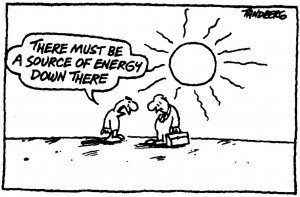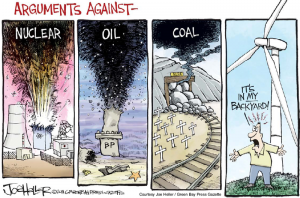

Climate change does pose significant threats to prospects for sustainable development as it threatens the ability to sustain the development with causing territories being submerged by water, reducing food supplies, and increasing health threats to populations. Luckily, there are some methods of development which simultaneously promote climate change mitigation and development. If the world continued to develop “business-as-usual” than there is no way that that type of development could be sustainable. The massive amounts of fossil fuels necessary for continued development on our current trajectory would push the Earth beyond the levels of climate change “dangerous” to human civilization. Non-fossil fuel intensive development methods, if employed globally, could mitigate further climate change, thus protecting development efforts from more dangerous climate change. The fact that non-fossil fuel methods reduce the danger of climate change makes it better able to sustain continued development through climate change. One alternate development strategy looking more and more hopeful is that of using renewable energies.
A strong paper written in support of low-carbon development is Sawin and Moomaw’s Worldwatch report “Renewable Revolution: Low-Carbon Energy by 2030”. Sawin and Moomaw make the case that combining renewable energy utilization with better energy efficiency efforts could lead to a low-carbon energy sector by 2030 without hindering development in any way, and perhaps even helping it. Currently, most of the world’s power plants lose about 2/3 of the energy they produce as heat (Sawin and Moomaw 10). There is no way that losing over half of the fossil fuel energy going into the power plants is necessary for development. With efficiency efforts capturing the excess heat and steam and updating older power plants to be more efficient, power plants are better able to serve development needs with less carbon emissions. Furthermore, combined with the use of renewable energies instead of fossil fuels, the new global energy system could in fact lead to low-carbon energy by 2030 (Sawin and Moomaw 6-7). Sawin and Moomaw claim that all of the technology required to employ renewable energies on a global scale are ready; only policy is holding back implementation (Sawin and Moomaw 23). This means that there is the capacity to energize the world on mostly renewable energy and not fossil fuels, and developing countries’ development will not be hindered by such efforts.
In fact Sawin and Moomaw give reasons that switching to renewables could in fact improve developing countries’ efforts compared to the business-as-usual approach. For one, renewable energy sources are especially rich in developing areas, offering a possibility for exporting energy and enjoying job opportunities which accompany the birth of a new industry (Sawin and Moomaw 16). Also, renewable energy can offer options for development where current fossil-fuel methods are failing. For example, in Africa where current energy infrastructure is failing, especially in light of the booming population there, fossil fuels are inadequate to serve Africans’ energy needs in order to develop. Renewable sources, and especially wind, however offer and option for more sustainable energy that can support the continent’s development (Sawin and Moomaw 39). Developing countries will still need aid in building new infrastructure, so luckily the motions are already in place to get this through UNFCCC-created funds for climate change initiatives.
As Sawin and Moomaw argue, a low-carbon energy sector offers a road to development which does not simultaneously threaten the sustainability of the very societies which are developing. The trick is not making in improving technology; this has already happened. Instead, policies such as fossil fuel subsidies need to be terminated while other programs supporting renewable energies be created. And as we are getting closer and closer to Sawin and Moomaw’s 2030 goal, time for policy change is running out. If nations want to maintain their hard-earned development, the necessity of moving away from fossil fuels cannot be ignored.
Work Cited
Sawin, Janet and William Moomaw. “Renewable revolution: low-carbon energy by 2030.” Worldwatch Institute, 2009. Web. 2 Nov. 2014.
